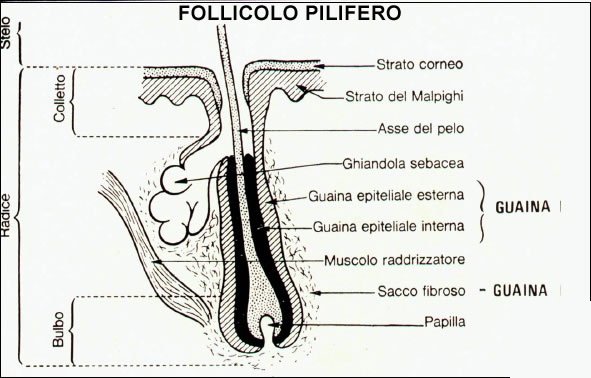-
.
Un parametro molto importante ai fini di un risultato di un trapianto FUE è la percentuale di attecchimento delle uf (che si ritiene soddisfacente dal 90% in su): una cosa di cui si parla poco è però la transection in fase di estrazione.
Nel link subito sotto c'è scritto: "Si considera che un chirurgo esperto in FUE ottenga tassi di transection inferiori al 5% mentre un chirurgo inesperto può sprecare quasi il 20% dei follicoli estratti.":
https://bellicapelliforum.com/trapianto/estrazioni-fue/
Una cosa che mi ha lasciato perplesso è che in un video dimostrativo di un caso del dott. Lorenzo (che se volete posso linkare) vengono mostrate le statistiche di uno dei suoi trapianti e, nell'esempio specifico del video, la percentuale di transection dichiarata è del 10,28% (e si sta parlando di un top indiscusso, da molti considerato il migliore in assoluto).
Specifico che è l'unico dei suoi video in cui viene mostrato questo dato, quindi é impossibile sapere quale sia mediamente la percentuale di transection degli altri suoi interventi.
Allora mi chiedo: supponiamo che io mi faccia un intervento FUE da 3000 uf. Ai fini della ricrescita devo quindi contare due aspetti:
1) Tasso di transection che supponiamo sia del 10%: quindi da 3000 uf estratte si passa a 2700 uf impiantabili (domanda, ma le 300 uf con transection vengono buttate via o vengono innestate in ogni caso con la speranza che ricrescano lo stesso? e da cosa si riconoscono?).
2) Percentuale di ricrescita, supponiamo sia del 90%: quindi da 2700 uf impiantate si passa a 2430 uf che ricresceranno.
Morale: una chirurgia FUE da 3000 uf, nella migliore delle ipotesi, si traduce in 2400 - 2500 uf effettive?!
Edited by !Jacuzz! - 26/10/2017, 20:03. -
.
seguo . -
.
It depends on several factors and the use of the technique of each Dr.
Dr lorenzo choi implanter https://bellicapelli.forumfree.it/?t=72304275&st=15
Differenza tra micromotore e punch manuale https://bellicapelli.forumfree.it/?t=70180032&st=15#lastpost
In general a recognized Dr 90% easy to regrow.
3000 ufs do not mean anything either depends on whether UF of 1,2,3 or 4 hair.
One guy can have 2700 UFS and a better result than another with 3100 UFs.
The transection is there via some Drs, it's up to you to choose the right Dr.. -
.
Attenzione in alcuni casi i dottori provocano volontariamente transection, una cosa è una transection parziale (voluta) altra è la transection totale (danneggiamento dell'u.f che diventa inutilizzabile)
https://bellicapelliforum.com/trapianto/tr...nto-di-capelli/. -
.
Bola, innanzi tutto grazie per la risposta. Ho letto l'articolo che hai linkato, ma non ho capito come mai la transection parziale sia volontaria...si tratta comunque di follicoli danneggiati, qual è il vantaggio di danneggiarli volutamente?  Nell'articolo non fa riferimento a questa "volontarietà".
Nell'articolo non fa riferimento a questa "volontarietà".
Ad ogni modo questo è il video a cui mi riferisco (minuto 8.07):
In questo caso si intende transection voluta quindi?
Edited by !Jacuzz! - 26/10/2017, 22:12. -
.
Thank you Bola, I did not know that and it is only in some cases where the question, ! Whirlpool! . -
.
Onestamente io continuo a non capire  .
. -
.
It's case by case
Dr. Devroye, MD (HTS Clinic, Brussels): FUE, hair regrowth transected into a donor area
As you probably know, the ISHRS FUE Research Committee has been working for a few years on different topics and models of studies related to FUE.
Two years ago, I proposed to study the consequence of transections in the donor zone. This idea came to me from two observations. The first was a completely devastated donor area in a patient returning from Turkey after undergoing FUE surgery of approximately 7,000 grafts in a single mega session. The second was a personal observation from the donor area of my patients and discussions with other members of the committee.
We had very different points of view on the consequences of the transections.
In my opinion, transections are probably more damaging, and therefore aesthetically more visible, than we generally think; and I have always been for the limitation of damage caused by FUE techniques. Some of my colleagues, on the other hand, felt that the transections were not important because, according to them, the follicles were still growing. I wanted to know the truth.
Thus, the objective of this study was, first, to know how many follicles grow back in the donor zone after a complete transection and, secondly, to study the relationship between the depth of the transection and viability of the remaining part of the follicle.
Protocol
It took me a long time to find an adequate protocol. At first, I tried to study the consequence of transections in regular patients. I finally realized that it was almost impossible to tackle the problem in this way for two reasons. First, the patient must be evaluated very often and it is not easy to find a patient who has the time to return several times for long-term follow-up. Secondly, I had to systematically shave the study area and, again, it is not easy to find a patient who is willing to accept it.
That's why I tried to find a protocol that corresponded as much as possible to our daily practice. Finally, I chose to transect the entire follicular unit. The only difference to the daily reality of transection is that we usually only transect one or two hair follicles, not all the follicles of a given unit.
In addition, I had to dissect the follicular unit deep enough (between 3 and 3.5 mm) to be able to take it out and cut the upper part at the right place with a small blade.. -
.
La transection in senso di "errore" è appunto la recisione del follicolo per errore che, a seconda del tipo di taglio, può danneggiare parzialmente o totalmente uno o più capelli dell'unità follicolare. Il più delle volte per transection si intende questo, il danneggiamento per troncamento incidentale.
Quello a cui fa riferimento Bola è una suddivisione voluta delle graft multiple.. -
.
La transection in senso di "errore" è appunto la recisione del follicolo per errore che, a seconda del tipo di taglio, può danneggiare parzialmente o totalmente uno o più capelli dell'unità follicolare. Il più delle volte per transection si intende questo, il danneggiamento per troncamento incidentale.
Quello a cui fa riferimento Bola è una suddivisione voluta delle graft multiple.
La suddivisione delle uf multiple dovrebbe chiamarsi splitting tecnique, tra l'altro io stesso avevo aperto un post su tale tematica. Mi sembra strano che sia la stessa cosa della "transection parziale" che dice Bola (cioè transection volontaria a detta sua). Inoltre l'articolo del dott. Devroye che Bola stesso ha linkato non parla di questa "volontarietà", parla solo di transection totale o parziale (il che mi torna) ma non fa riferimento al fatto che quella totale sia indesiderata, mentre quella parziale sia voluta (???) come ha scritto Bola.
Comunque riparto dalla domanda che ho scritto nel post iniziale, la quale racchiude tutto: Quindi, in base alle considerazioni che ho postato, una chirurgia FUE da 3000 uf, nella migliore delle ipotesi, si traduce in 2400 - 2500 uf effettive?!
Edited by !Jacuzz! - 20/11/2017, 18:32. -
.
Ciao Jacuzz,
Se parliamo in termini assolutistici e basandoci sulle percentuali che hai citato mi viene da risponderti di si.
Poi però subentra la soggettività e il responso può cambiare (in peggio ma anche in meglio).
Perdona la banalità della risposta ma ci sono diverse variabili da tenere in conto anche quando si parla di un concetto apparentemente specifico come la transection.. -
.
Sinceramente una percentuale di transection del 10% la trovo davvero elevata, io ero rimasto che nell'estrazione manuale si stava intorno all'1 o 2%. Inoltre non tutte le unità follicolari recise sono inservibili in quanto la recisione può essere parziale o non uccidere l'unità.
Ad ogni modo non credo proprio che le graft "uccise" vengano impiantate e quindi conteggiate, ma forse questo dipende da chirurgo a chirurgo. La percentuale d'attecchimento invece, dato che non può essere prevista, fa parte delle variabili di riuscita comprese nel numero totale di grafts.. -
.CITAZIONEAd ogni modo non credo proprio che le graft "uccise" vengano impiantate e quindi conteggiate
Magari vengono conteggiate ma non impiantate... della serie te ne estraggo 3000 (quindi te ne faccio pagare 3000), ma te ne innesto 2700 perchè 300 sono "uccise" dalla transection (ma te le faccio comunque pagare in quanto te le ho estratte).
Te intendi invece della serie te ne faccio pagare 3000 allora te ne impianto sicuramente 3000 sane, a costo di prelevarne ad es. 3300 ed eliminare le 300 uccise?
Spero che sia come dici te
Ad ogni modo, qualcuno di voi sa spiegarsi come mai Bola ha affermato che la transection parziale è volontaria? (visto che lui non risponde più

 )
.
)
. -
.
Jacuzz ho mandato un messaggio via Whatsapp al Dr.Lorenzo e la risposta te la darà lui  .
. -
.
ahah ti ringrazio Bola, ma la mia domanda era di stampo generale  Il dato del dr. Lorenzo l'ho riportato tanto per fare un esempio numerico
Il dato del dr. Lorenzo l'ho riportato tanto per fare un esempio numerico
Edited by !Jacuzz! - 22/11/2017, 02:13.
Transection & Attecchimento - Per Bola e utenti esperti |





